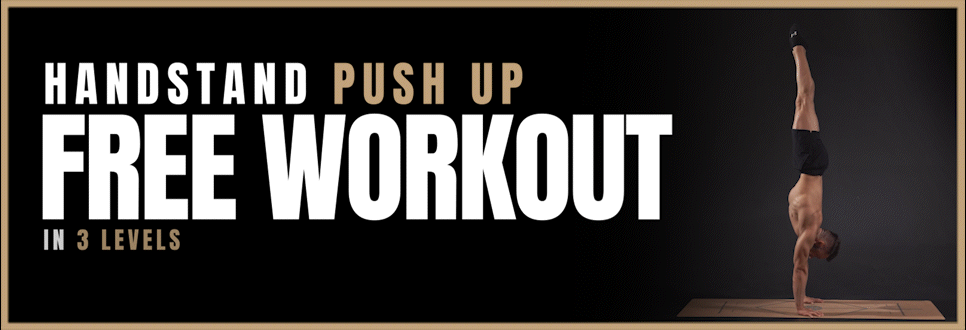Floor VS Parallettes Handstand Push Up
Handstands on the floor VS handstands on parallettes will never quite be the same and depending on what you are used to you will most likely have a pretty strong preference here.
Growing up training gymnastics we did all of our training on p-bars. When I joined the performing arts industry I moved the majority of my workouts to the floor. Over 20 years later I can say with confidence that parallettes just like the floor should have a space in your training routine and should be used strategically.
Why does it matter?
Handstand push ups are a great drill to improve upper body pushing strength, handstand control and body awareness. They are not easy. Your weight has to shift throughout the movement depending on which phase you are in and there is lots of pressure traveling through your body.
It is essential to be in total control at all times, to avoid discomfort and to minimize the risk of injuries.
The floor and parallettes are very different. Knowing and understanding what exactly differs the 2 is key in order to implement them into your training routine to their fullest potential.
Change of hand position
Probably the most obvious change from the floor to parallettes is the change of hand position. Whilst your hand is flat on the floor and pointing towards the front on the bars your hand is gripping something and externally rotated by 90 degrees.
Pressure on the wrist
This is the main reason why I train most calisthenics drills on parallettes and not on the floor. Mt wrists are rather stiff and with that I tend to get wrist pain. This can easily be avoided by training on parallettes. Your wrists move into big amounts of hyperextension when performing the HSPU on the floor. There is already not a lot of space in your wrists. The flexion and the pressure of the HSPU might be fine for 1 or 2 reps but with a consistent training routine you might run into overuse injuries.
By using parallettes your wrist stay in a regular flexion position the entire time and you can reduce pressure immensely.
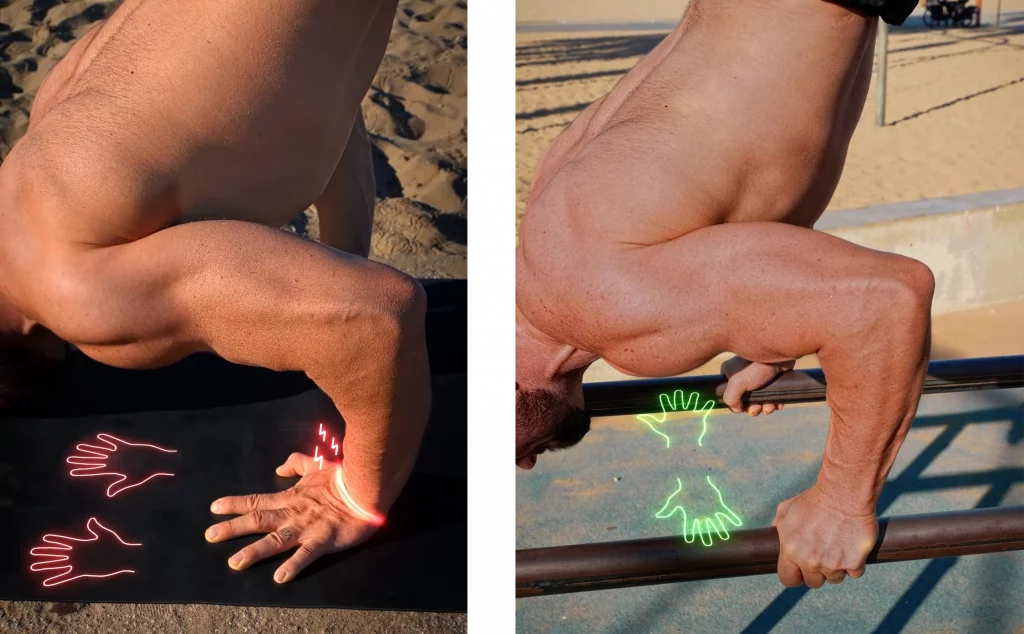
Control
Another great reason to consider using parallettes instead of just training on the flat floor is the added amount of control that you can gain over your body and any movement.
The problem with our hands is that we only have 5 fingers and even if we spread them super wide they barely cover half of our palm. Those 5 fingers are great for pushing into the floor and guiding our handstand. We can lean into them and use them to stay in control. As long as we are always slightly falling over towards the back we can decide how hard we push with the fingers and where our handstand should go.
The problem really starts as soon as we are not fingertip heavy anymore or even fall in the opposite direction. We do not have fingers on the side of our chest which means if we fall there is no saving anything. If we fall we are gone.
This is different with parallettes. As we grab the bar we have a much better connection with it and our control becomes much more 3 dimensional. No matter in which direction you are falling you can catch yourself and pull yourself back up through the power of your wrists.
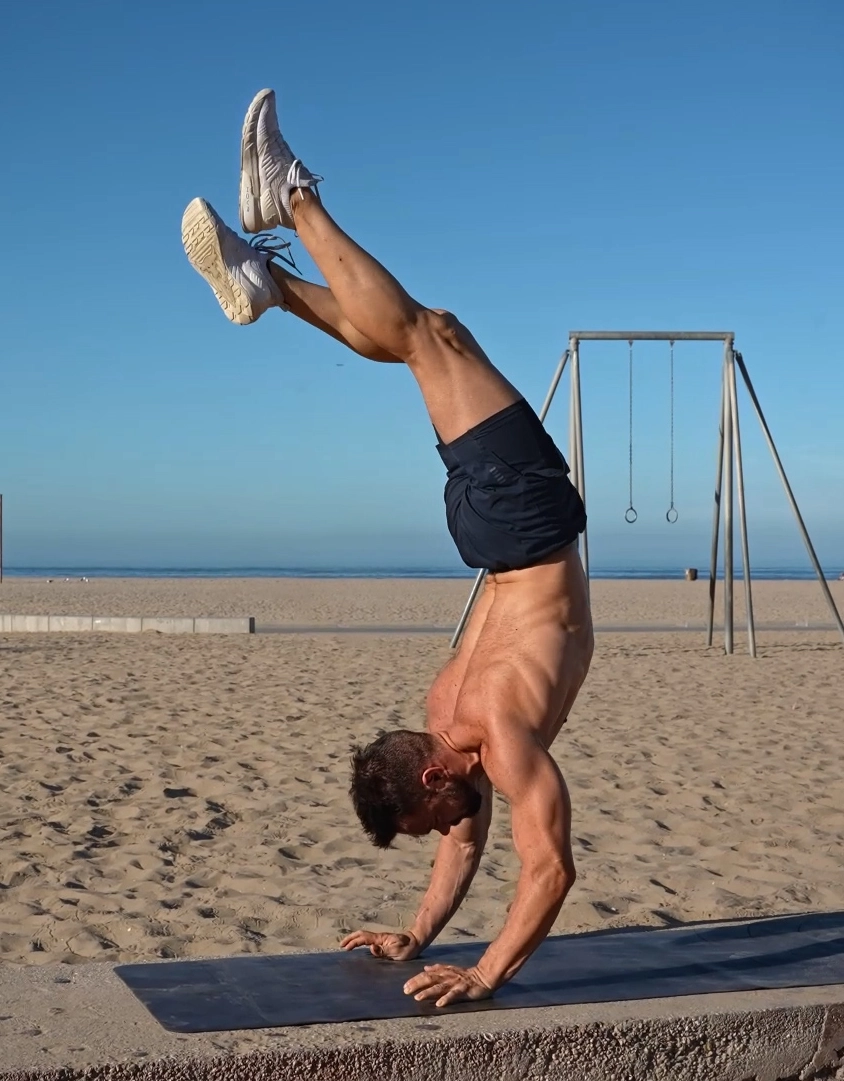
Freedom of movement in your elbows
The extra bit of control over your body added by the way that you grab the bars allows you to maneuver your body differently and with that target different muscles.
When doing HSPU on the floor with your hands facing towards the front the elbows mostly stain in or can flare out slightly. On parallettes on the other hand you can purposely flare your elbows out much more having them point towards the outside. Your upper body will be in less of an angle and the head ends up right between your hands and not out towards the front. This rather uncommon variation is not a better way of doing a HSPU yet simply targets other muscles like your triceps more.
Elevation
I was a professional circus performer my entire life. Let me tell you that I have learned to love to perform with heights. I am very comfortable on my hands so for me the higher is obviously the better. What exactly does this extra bit of height mean though in the case of training handstand push ups?
Danger of falling
Growing up they tried to make me believe that some people are dogs and others are cats meaning some people can fall and other better don’t. I lived to learn that we can all be ninjas if we take care of our bodies and believe in ourselves enough.
The added height of the parallattes can be dangerous. Anything that goes up must also come back down. If you lose balance on the floor you can simply step down. Lose balance on the bars and you have to fall all the way to the floor. This means that even though you have more control and a better connection with the floor on parallettes you might have to abort the fight for balance a bit sooner than you would on the floor to assure you make it safely to the ground without injuries.
The second problem here is also that most parallettes come in sets of 2 and are disconnected from each other. If you would take a step trying to catch yourself the parallette will most likely fall over leading to the worst case scenario. Start slow when training with parallettes. First get used to the physics and the way they function. Then start pushing your conditioning hard. Keep in mind that all parallettes are slightly unique and have a different feel. Always better to be safe than to be sorry!
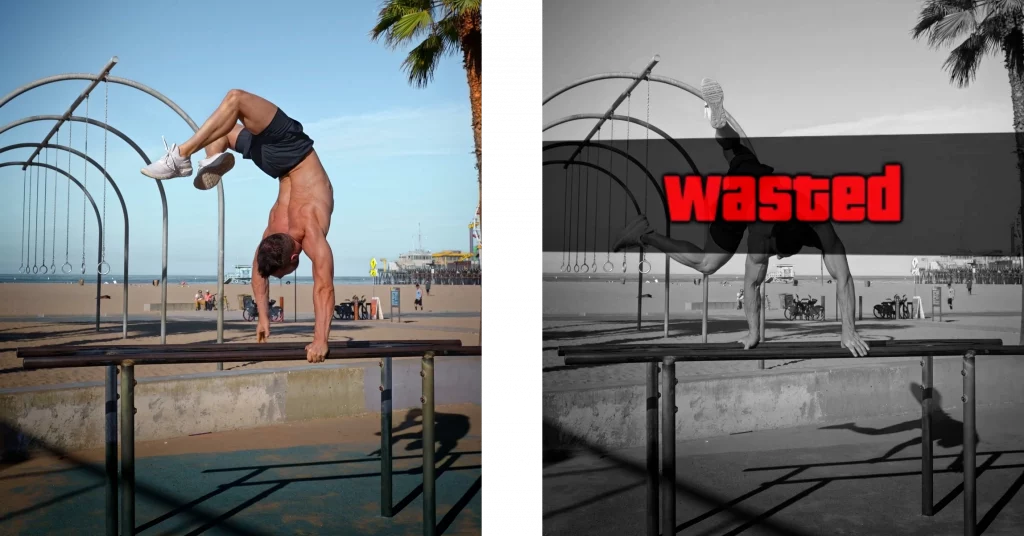
Go deep
The main reason for pretty much all advanced athlete’s to start using bars is to go deeper. This can and should even happen before you are able to do a regular freestanding HSPU as deep handstand push ups are a great way to bridges gabs between early progressions.
if you want to do extra deep HSPU with your hands flat on the floor you have to find some kind of box or ledge. This might look cool but usually involves quite a bit of extra balancing and possibly even danger.
On parallettes on the other hand nothing has to change. With the already well rehearsed hand position and usual set up you can simply keep going lower after your head reaches the height of your hands. Come to the end of the p bars so your shoulders do not touch the bars.

Harder to get up
Now you can absolutely argue that your parallettes are nice and low and therefore there is absolutely no added danger. This would be the best case scenario! Yet no matter how high your parallettes are unless you are fairly good at handstands it will still be a challenge to get up.
You either have to jump from the floor clearing the extra height or you have to jump starting with your feet on the bars which usually takes some getting used to as well.
If you are not getting up comfortably 4 out of 5 times I would strongly recommend training exactly this separately. Practice your HSPUs on bars at the wall to cut balance out of the equation and work on your parallettes handstand skills in separate sessions or before your strength work.
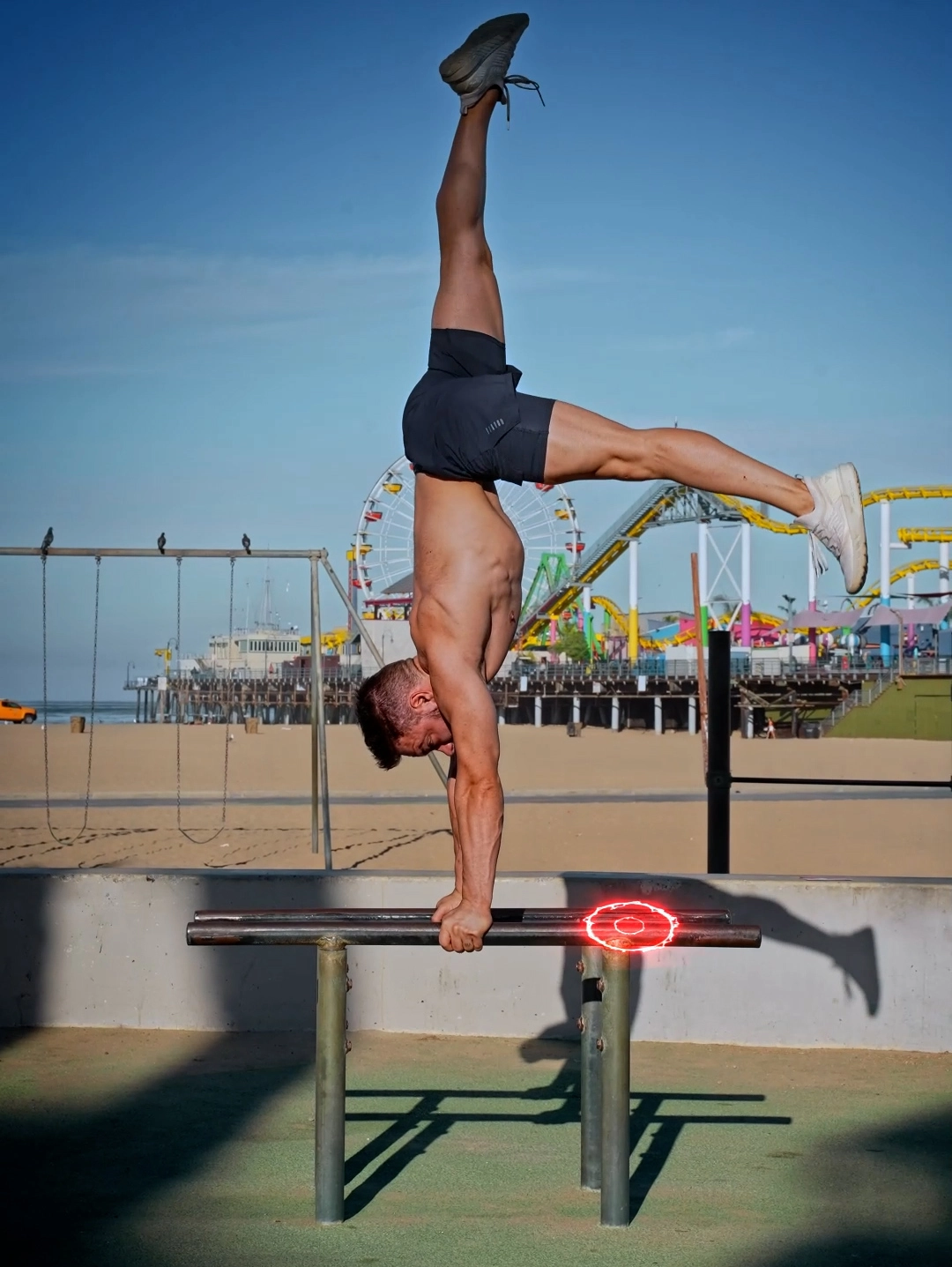
Availability
Here is one of the big ones when HSPUs on the floor are really winning. Pretty much no matter where you are you always have a piece of floor available. Parallettes on the other hand are often big and do not fit in your gym bag well. Some come apart and need to be assembled. They are perfect for training at home but can be a drag to carry around from gym to gym.
Handstand Push Ups on the Floor VS Handstand Push Ups on Parallettes. In my eyes the parallettes win but in the end it is very much up to personal preference. My wrists are stiff, I do not have a problem with balancing on higher surfaces and I appreciate being able to go lower than when just training on the floor. Besides that I usually train at home and got the luck to be able to leave my bars at the gym. Are the bars the right choice for you? This is up to you! Let me know!
